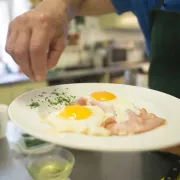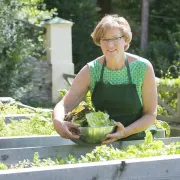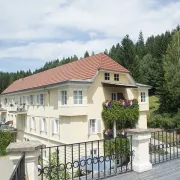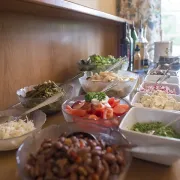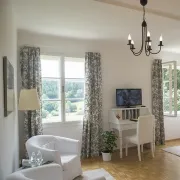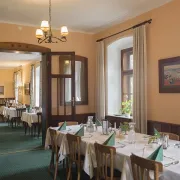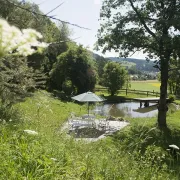Nature Park Zirbitzkogel-Grebenzen in Styria
What defines a Nature Park?
Our “Naturpark” Zirbitzkogel-Grebenzen preserve is a natural habitat of high ecological value and is dedicated to the conscious coexistence of man and nature. Nature preserves ensure healthy habitats — for plants, animals and humans. Our Naturpark Zirbitzkogel - Grebenzen is among the first of the seven Styrian nature preserves and includes 10 municipalities with an area of 285 km². The Nature Preserve is located in the middle with a high mountainous region bordering the Murtal in the north, the Seetal Alps in the east, the Styrian-Carinthian border in the south, and the Kuhalm in the west. It ranges from an altitude of nearly 800 to 2396m on Zirbitzkogel.
From diverse cultural landscapes to high-quality reserves such as the internationally protected Hörfeldmoor, the Dürnbergermoor, the Furtnerteich and many other small natural jewels, our region offers a wide variety of environments to be explored and preserved for future generations. The four pillars of nature parks are: protection, recreation, education and regional development. What is important to us? Nature Park Partners qualify as ambassadors of holidays in harmony with nature. Pichlschloss received this title, not only because of its perfect location, but because we strive to respectfully cherish our roots.
Protection: We keep the environment and the forest around Pichlschloss as natural as possible, using no pesticides, setting up nesting boxes, striving for diversity, heating with wood chips produced by Biowärme St. Lambrecht, renovating with environmentally sound building materials, cleaning with earth friendly products, and constantly staying up to date with the newest environmental goals!
Recreation: We focus on a healthy habitat, as well as healthy exercise programs, living and eating well!
Education: Connecting with nature, themed hikes, strengthening of the natural consciousness, recognition of valuable habitats and the landscape around Pichlschloss underpin our education efforts.
Regional development:
Cooperation with local farmers and farms, eco-friendly transportation concepts, promoting employment opportunities in the region ensure our continued success.
Reading Nature
An intact environment is increasingly valued. The countryside can show us what city people long for: flowering meadows, expansive woodlands, cows grazing in meadows, nutrient-rich produce sourced from local farmers, crisp air, fresh water ...
When these valuable resources become scarce, we begin to look deeper, to consider how they can be better protected and put to better use. We begin to read what nature is trying to tell us.
What can Nature tell us?
Nature reading is really nothing new. Rather, it is a return to the forgotten, unlearned and in recent years overlooked ways of the past. We have carelessly forgotten and now laboriously try to relearn the wisdom and everyday values which our grandparents lived by and handed down to us. How often do we wonder about flowers, herbs, mosses, lichens, follow the migration of birds, ponder how an anthill works or how a bee colony is organized?
Where can we learn “nature reading”?
One option is to hike along the Via Natura, which is divided into 10 stages. Each section deals with a special nature read issue that can be worked out by yourself or explained by our well-trained park rangers on a guided hike. Each Nature Park partner situated along the Via Natura, has chosen a theme that is discussed in wooden nature reading books.
Since Pichlschloss used to be a sanatorium for lung diseases, we quickly decided on the theme "Good, clean air in conjunction with lichen.”
The air quality of an area can be easily detected by observing sensitive lichen. One differentiates between more resistant crust, or leaf lichens and sensitive beard and shrub lichen. In areas with low air pollution, trees are covered with different lichens. In cities, there are only isolated occurrences. Lichens are not parasites. If you see a dead tree covered with lichens, they did not cause the tree to die. Lichens seek out perfect growth conditions.
Now that you know that lichens are good air indicators, please walk carefully through our forests and observe the lichen variety! You’ll be surprised by how many there are and how different they look.





